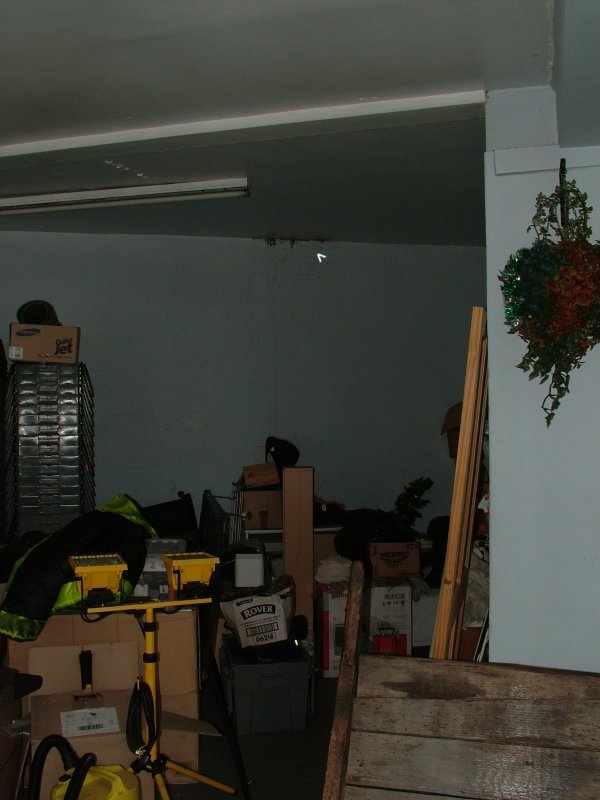
Removal of bee colony from a garage showroom flat roof (June-July 2010)
The colony was between the rafters and the nest occupied a space measuring 700 x 305 x 355 mm, i.e. 76 litres. It is believed to have been there three years.
The proprietor noticed staining of the showroom ceiling in 2009. The arrow in the photo below shows the staining (9 June, 11.34).

Below: detail of ceiling staining. When the nest was extracted some combs were found to have fallen to the base of the cavity some time ago, possibly because of the heat of the sun on the flat roof. The staining is probably from honey.
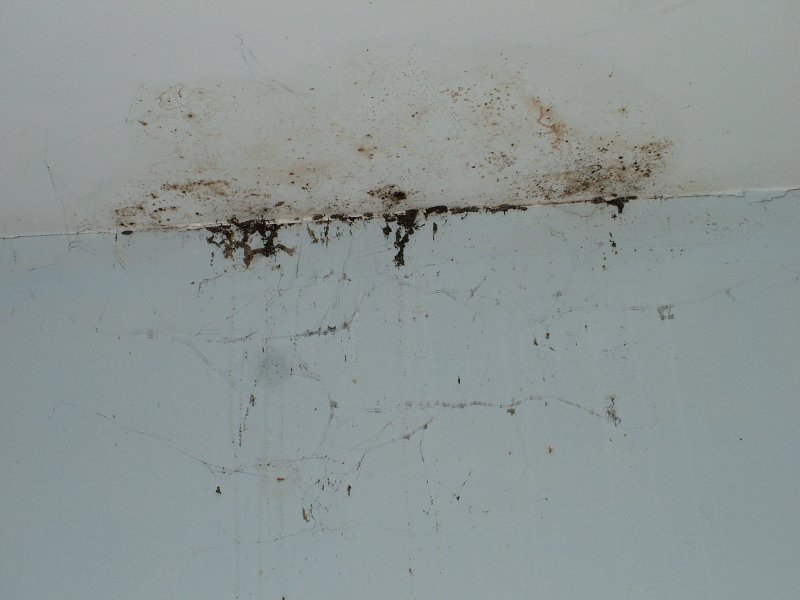
Below (11.43): Rear of the garage showroom flat roof. The bees were entering under the fascia board.
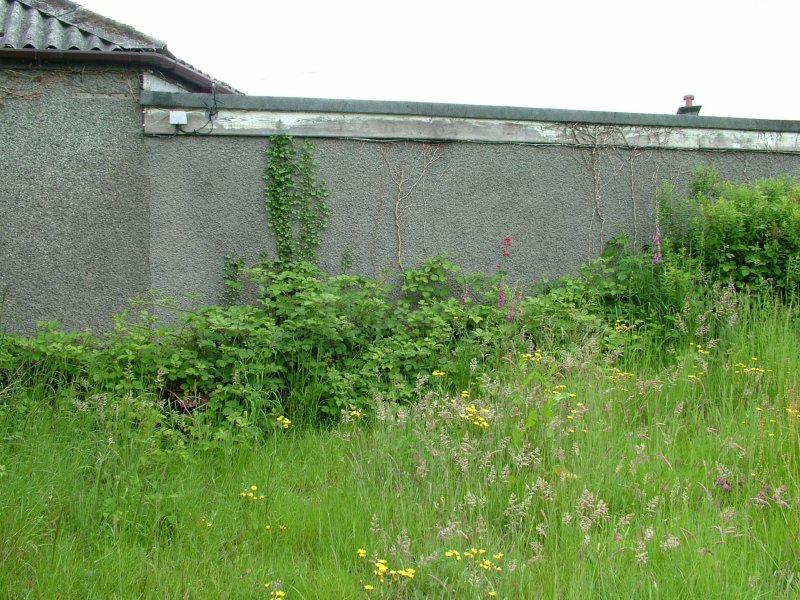
Below: Close-up of colony's entrance. A pollen carrying bee can be seen entering over a cable.
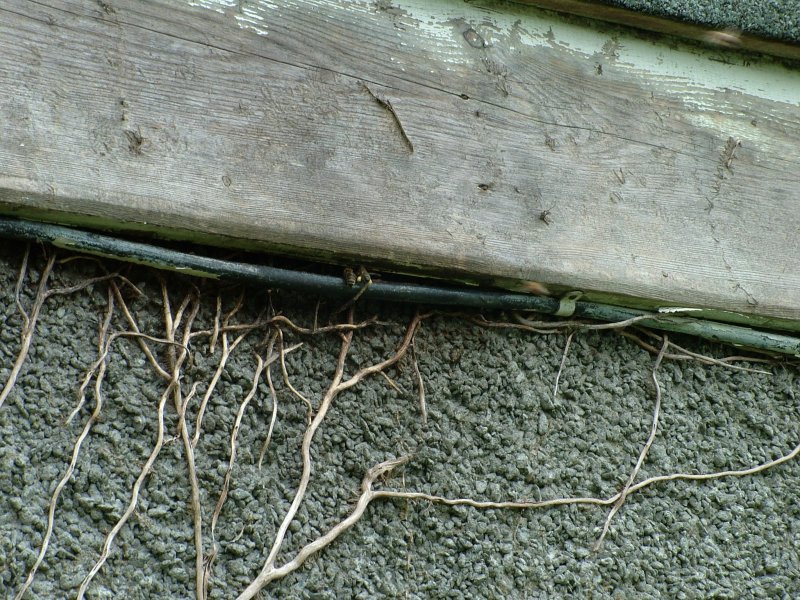
Below (11.54): Nail heads showing locations of rafters.
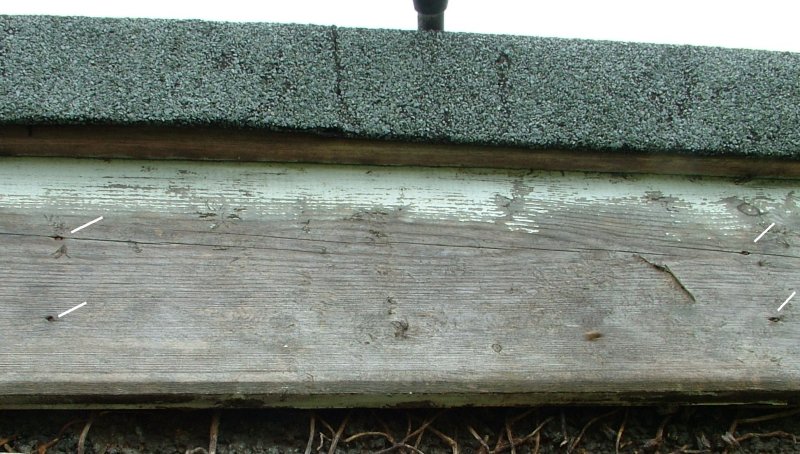
Below (12.13): The section of fascia was removed by drilling holes and sawing with a keyhole saw.
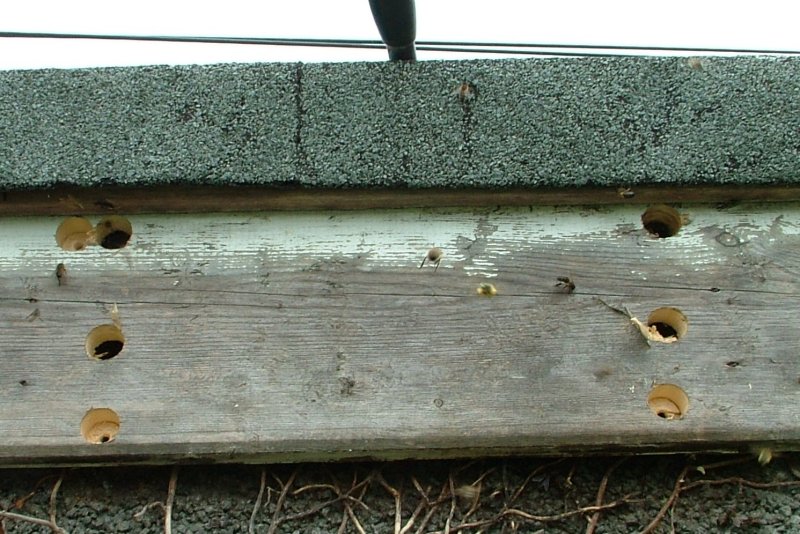
Below (12.24): The colony's nest was immediately behind the fascia. The entrance was to the right. There is evidence of older comb attachments to the top of the cavity. New comb had been built on it this season. The nest may be much older than three years judging by the hardness of the comb in places.
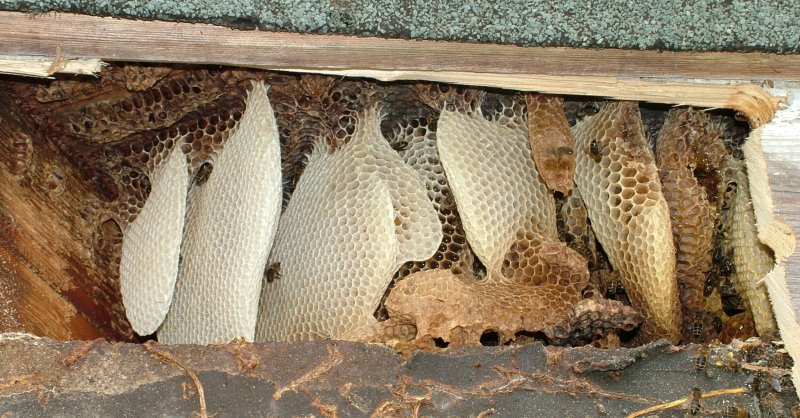
The combs were removed starting from the rear of the nest, away from the entrance. As the comb orientation was close to 'cold-way', i.e. end on to the entrance, and the aperture through which they could be removed was less than two thirds of the nest height, it was rarely possible to remove a comb intact. The brood combs pieces were too small to be worth tying into frames so they were propped up with sticks in a hive box. The hive was closed up and placed above the original entrance near where most of the displaced bees were (below, 14.55).
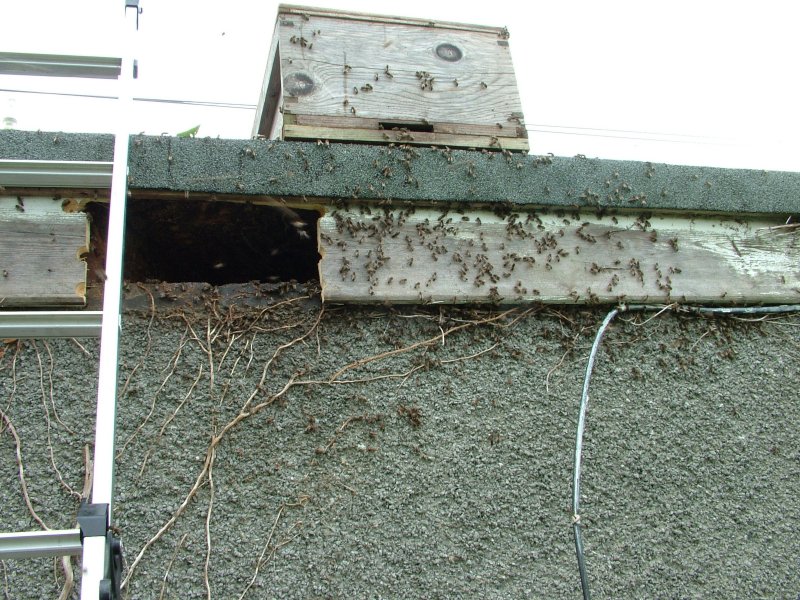
Below: Bees showed interest in the hive and entered it (15.23).
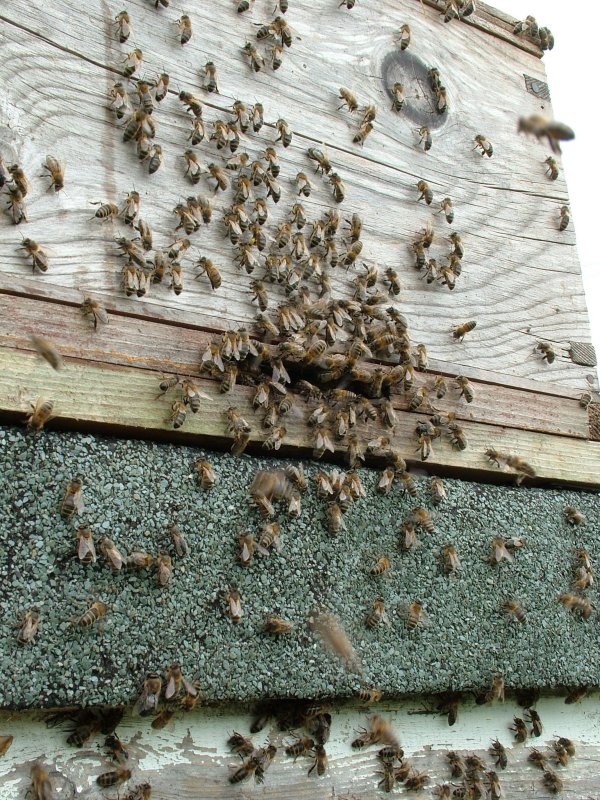
Below (15.25): Flash photo into cavity. Examination of this photo on a computer screen the same evening revealed a residual cluster of bees about a metre further into the cavity.
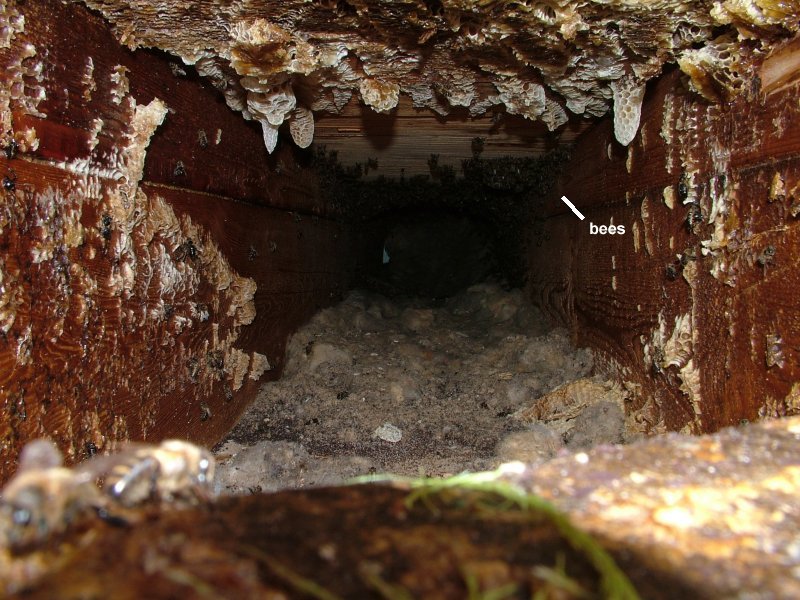
Below (15.26): Top of cavity.
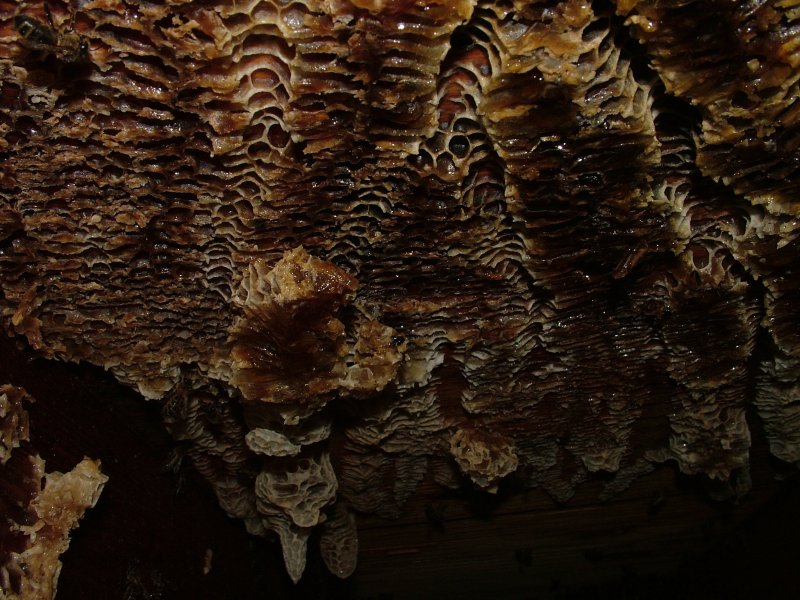
Below (15.26): Floor of cavity (plasterboard ceiling).
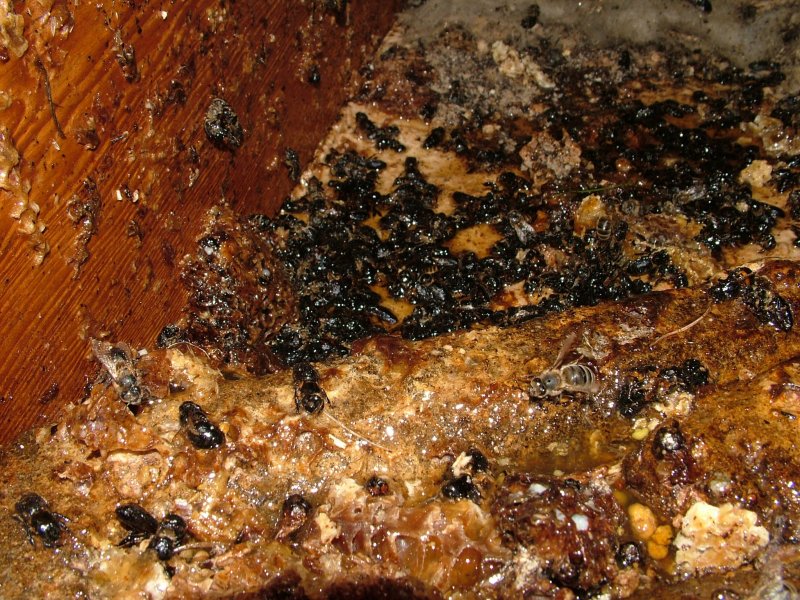
On returning at 20.30 hardly a bee was to be seen. They had almost all abandoned the box. A small cluster was still present about 1.7 m into the cavity, but the most bee noise was audible through the fascia in the adjacent rafter space to the right of the cavity. The residual cluster in the cavity was driven out with 'Bee-Quick' on a rag inserted on a long stick. The cavity was then plugged with bubble-wrap in a plastic sack The box of comb, now with chilled and therefore dying brood, was taken away for examination. There were eggs present and there was no sign of brood disease. Only one bee with evidence of deformed wing virus was seen in the whole operation.
The following day, the section of fascia was nailed back against battens nailed to the rafters. Most of the ivy was removed from the gap under the fascia to give a good key for sealing up.
Below (10 June, 13.20): Bee access under and through the fascia was sealed with expanding foam. The foam was later trimmed.
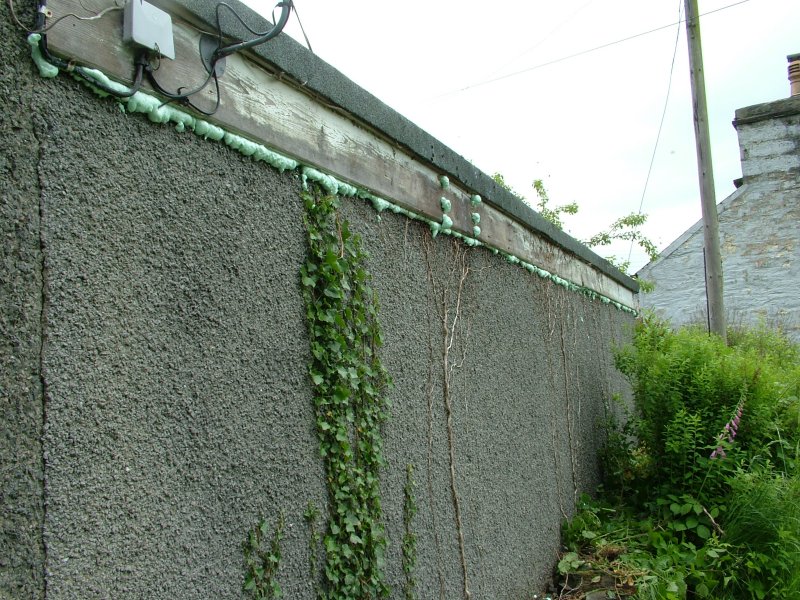
Bees immediately started to look for new ways into the cavity, searching all over the garage building, including, later in the day, inside.
21 June: Inspection visit. Bees had made a new entrance to the roof space through the foam to the east of the old one. Sealed with building mastic. Killed clustering bees with detergent.29 June: Inspection visit. Bees still entering, now near phone junction box (see above photo) at far eastern end of fascia. Sealedwith mastic. Killed clustering bees with detergent.
30 June: Inspection visit. Bees still entering by phone junction box though in much smaller numbers. Re-sealed with mastic. Killed clustering bees with detergent.
5 July: Called because there was still activity by the fascia. A small hole was detected where ivy had grown under fascia. This was sealed with mastic. Two special visits by car, one in tthe morning and one late evening to destroy trapped-out returning bees. Total time on site: 1 hour
13 July: Visits morning and afternoon. No apparent traffic. About half a dozen trapped-out bees killed with detergent.